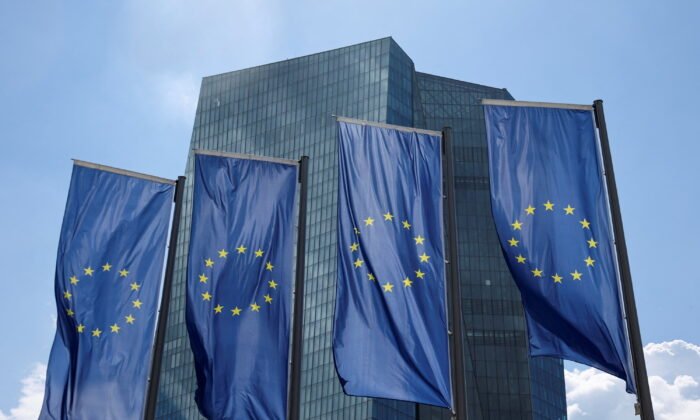ECB Surpasses Fed with First Rate Cut in Half a Decade
The European Union’s central bank took the bold step on June 6 of implementing the first rate reduction in its monetary policy decisions since 2019, amid conflicting data.
The European Central Bank (ECB), which had been widely expected to announce its initial rate reduction, reduced three key interest rates by 25 basis points starting from June 12. This move lowered the rate on refinancing operations to 4.25 percent, with rates on the marginal lending facility and deposit facility decreasing to 4.5 percent and 3.75 percent, respectively.
This rate cut signifies the first reduction in the main refinancing operations rate and the marginal lending rate since March 2016, and the first cut in the deposit rate since September 2019.
“Based on a revised assessment of the inflation outlook, underlying inflation dynamics, and the strength of monetary policy transmission, we find it appropriate to alleviate the degree of monetary policy constraint after maintaining rates for nine months,” stated Christine Lagarde, President of the ECB, during a media briefing following the announcement.
With this action, the EU becomes the second significant global economy this week to lower its lending rate, following Canada’s decision on June 5. This change is also in line with previous monetary policy easing by central banks in Brazil, Mexico, Chile, Switzerland, and Sweden this year.
Meanwhile, the ECB has taken a leading position ahead of the Bank of England and the U.S. Federal Reserve, both of which are likely still several months away from implementing similar cuts.
“Price pressures have weakened, and inflation expectations have declined at all horizons,” noted Ms. Lagarde, emphasizing the ECB’s commitment to maintaining policy rates at a level that supports the targeted inflation rate. “We are not setting a specific rate path.
The ECB president also acknowledged that inflation had decreased sufficiently to justify lowering rates, but refrained from specifying the pace or extent of future rate cuts given the expected inflation levels in the eurozone.
Despite this, the ECB has confirmed its intention to gradually reduce the euro system’s holdings of securities under the pandemic emergency purchase program (PEPP) by an average of 7.5 billion euros ($8.17 billion) per month in the second half of the year, following a strategy similar to the asset purchase program.
Persisting Price Pressure
The ECB has raised its inflation forecasts for the current year and the next, stressing that any further rate cuts will depend on future data. The bank reiterated the importance of maintaining borrowing costs at sufficiently high levels to manage price growth.
“Despite advancements in recent quarters, domestic price pressures remain robust due to elevated wage growth, with inflation expected to surpass the target well into the next year,” added the ECB president.
The ECB has revised its predictions for headline and core inflation in 2024 and 2025 upward from previous projections in March, forecasting an average of 2.5 percent for headline inflation in 2024, 2.2 percent in 2025, and 1.9 percent in 2026.
The bank also anticipates that inflation, excluding energy and food, will average 2.8 percent in 2024, 2.2 percent in 2025, and 2 percent in 2026. Additionally, economic growth in the region is projected to accelerate to 0.9 percent in 2024, 1.4 percent in 2025, and 1.6 percent in 2026, according to the ECB.
Will the US Fed Follow?
As European central banks adopt a more accommodative approach compared to the U.S. Federal Reserve, expectations have risen for a similar move from the Fed during its Federal Open Market Committee meeting on June 11 and 12.
Higher U.S. interest rates could impact global and local financial markets, with a widening interest rate gap between the two regions potentially causing the euro to depreciate against the dollar, enhancing the competitiveness of European exports.
Conversely, a weakening euro could lead to an increase in the spread between government bond yields, resulting in faster bond price appreciation in the eurozone compared to the United States, due to the inverse bond prices-yields relationship.
Meanwhile, the U.S. is facing government stimuli, pandemic recovery spending, and robust growth that are driving inflation, with the consumer price index currently at 3.4 percent annually, well above the Federal Reserve’s 2 percent target rate.
Market indicators suggest that the Fed may proceed with its decision on its own timeline, with the euro gaining ground and sovereign bond yields in the eurozone rising, while European equities slightly retraced some earlier gains despite the Euro Stoxx 600 index hitting record highs on June 6.
In summary, CME FedWatch indicates that the market sees a zero percent chance of the Fed reducing its rates this month.





